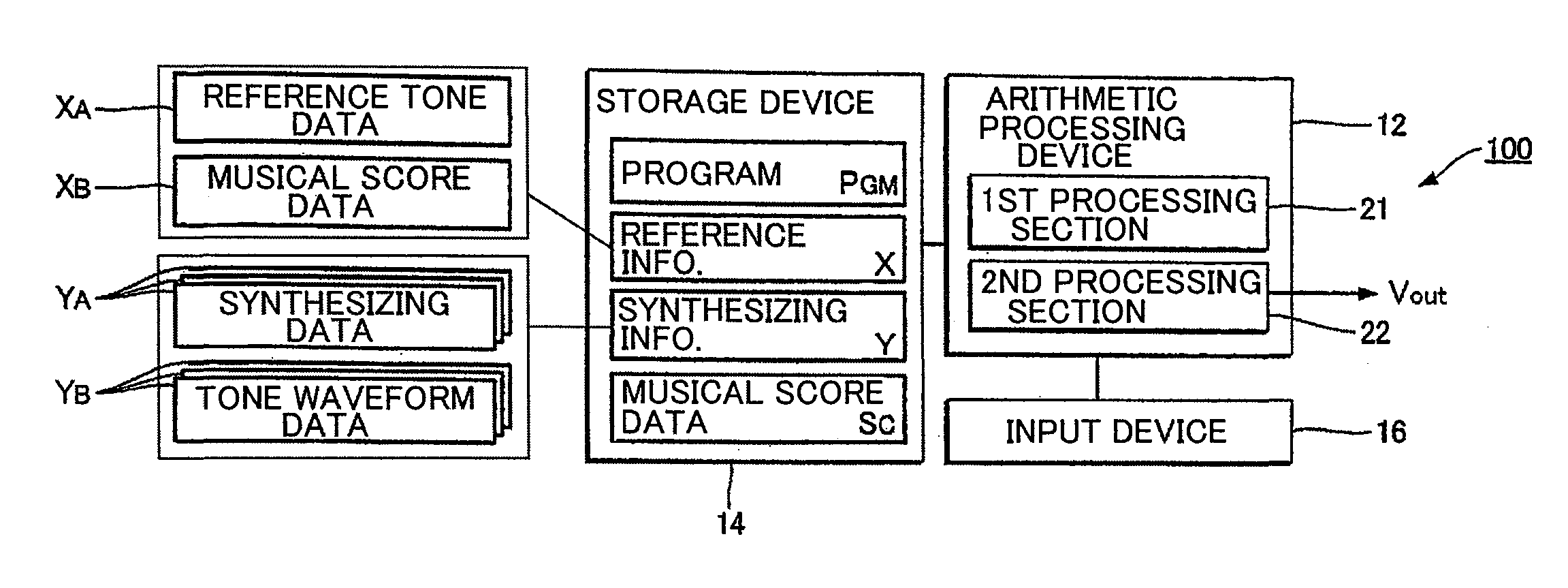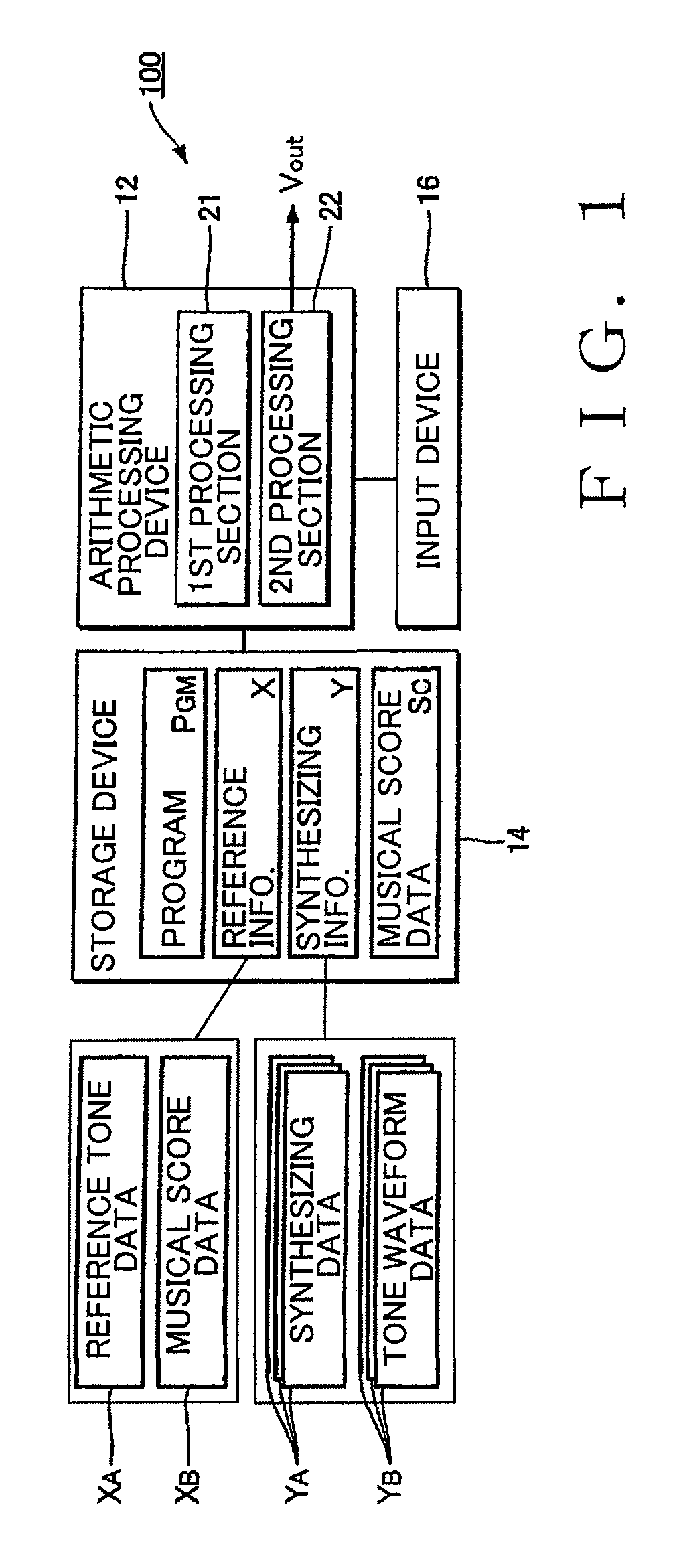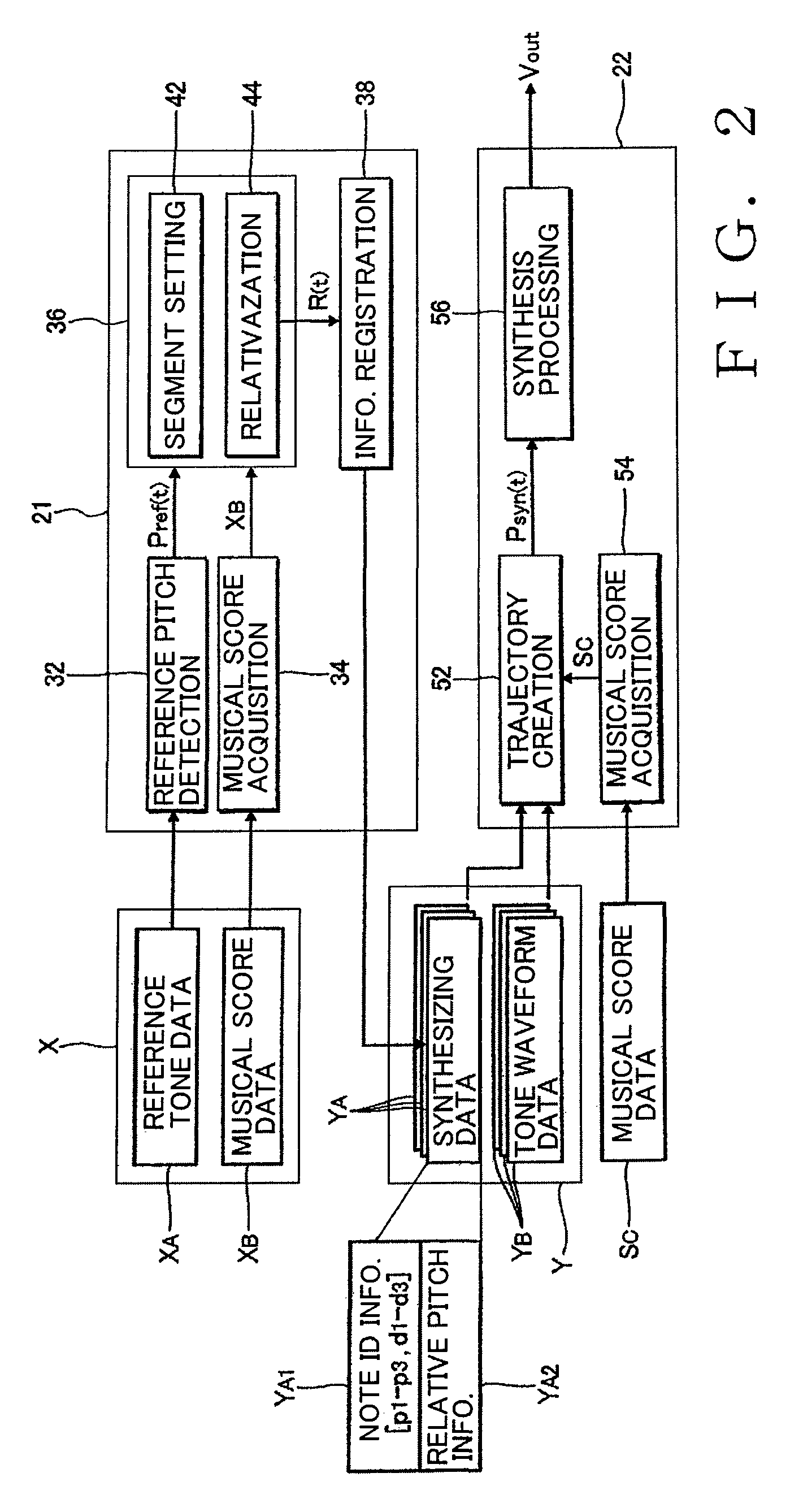Tone synthesizing data generation apparatus and method
a data generation and tone technology, applied in the field of audio sound synthesizer technology, can solve the problems of difficult to prepare probability models for all kinds of attributes of a designated tone, and the possibility of aurally-unnatural synthesized tone generation, and achieve the effect of reducing the data quantity of the pitch trajectory to be stored
- Summary
- Abstract
- Description
- Claims
- Application Information
AI Technical Summary
Benefits of technology
Problems solved by technology
Method used
Image
Examples
first embodiment
[0041]The information registration section 38 of FIG. 2 stores, into the storage device 14, a plurality of synthesizing data YA each representative of a time series of relative pitches R(t) within each of the note segments σ. Such synthesizing data YA is created per note segment σ (i.e., per note). As shown in FIG. 2, the synthesizing data YA includes note identification (ID) information YA1 and relative pitch information YA2. The relative pitch information YA2 in the first embodiment represents a time series of relative pitches R(t) calculated for the note segment σ by the relativization section 44.
[0042]The note identification information YA1 is an identifier identifying attributes of a note (hereinafter referred to also as “object note”) which are indicated by individual synthesizing data YA, and the note identification information YA1 includes variables p1-p3 and variables d1-d3. The variable p2 is set at a pitch name (note number) of the object note, the variable p1 is set at a...
second embodiment
[0050]FIG. 4 is a diagram explanatory of behavior of the segment setting section 42 provided in the Section (A) of FIG. 4 shows time series of notes and lyrics indicated by musical score data XB, and section (B) of FIG. 4 shows note-specific note segments (provisional note segments) σ initially segmented in accordance with the musical score data XB. Section (C) of FIG. 4 shows a waveform of a reference tone represented by reference tone data XA. The segment setting section 42 corrects the note-specific provisional note segments σ of the musical score data XB. Section (E) of FIG. 4 shows corrected note-specific note segments σ. The segment setting section 42 corrects the note segments σ, for example, in response to a user's instruction given via the input device 16.
[0051]In section (D) of FIG. 4, there are shown boundaries between individual phonemes of the reference tone. As understood from a comparison between sections (A) and (D) of FIG. 4, start points of the individual notes in...
third embodiment
[0063]The trajectory creation section 52 provided in the third embodiment creates a time series of synthesized pitches Psyn(t) by use of the relative pitch information YA2 (probability model M) of the selected synthesizing data YA, corresponding to a designated tone indicated by the musical score data SC, of the plurality of synthesizing data YA. First, the trajectory creation section 52 segments each designated tone, whose length of duration is designated by the musical score data SC, into K unit segments U[1]-U[K]. The length of duration of each of the unit segments U[k] is determined in accordance with the probability distribution DL[k] indicated by the duration length model MB[k] of the selected synthesizing data YA.
[0064]Second, the trajectory creation section 52 calculates an average μ[k] on the basis of the average μ0[k] of the probability distribution D0[k] of the relative pitches R(t) of the variation models MA[k] and a pitch NB corresponding to a pitch name of the designat...
PUM
 Login to View More
Login to View More Abstract
Description
Claims
Application Information
 Login to View More
Login to View More - R&D
- Intellectual Property
- Life Sciences
- Materials
- Tech Scout
- Unparalleled Data Quality
- Higher Quality Content
- 60% Fewer Hallucinations
Browse by: Latest US Patents, China's latest patents, Technical Efficacy Thesaurus, Application Domain, Technology Topic, Popular Technical Reports.
© 2025 PatSnap. All rights reserved.Legal|Privacy policy|Modern Slavery Act Transparency Statement|Sitemap|About US| Contact US: help@patsnap.com



